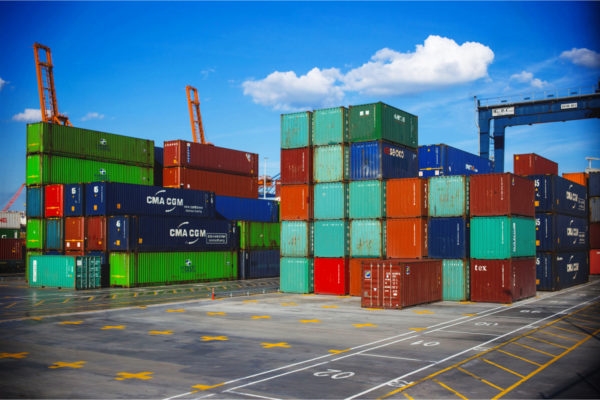— May 15, 2018
For a long time, small retailers had no way of expanding their business beyond their geographical borders. But with the Internet and the birth of the eCommerce industry, all that has changed.
In 2017, global B2C online sales grew to $ 2.304 trillion and by 2020, it’s projected to be worth over $ 4.135 trillion.
These volumes have been attributed to the rapid adoption of mobile devices and the Internet in emerging global markets. Add the impact of secure payment options and better logistics, and you can begin to see why eCommerce is growing rapidly across the globe.
Sales in the BRIC countries–Brazil, Russia, India and China–have outstripped the growth recorded in the US and Canadian markets.
China alone already surpassed the US eCommerce market in 2016.
Safe to say, there has never been a better time to start thinking about an international eCommerce strategy.
Despite the opportunity for business growth that international eCommerce presents, many eCommerce players have trouble tapping into this opportunity. They cite everything from complex shipping regulations to currency fluctuation.
There’s no doubt that a lot of planning is required before entering an international market. But when it’s done right, it can be very lucrative for any business.
To get your eCommerce right for the international market, Floship has compiled the most important points you must consider:
Do Thorough Research
At first glance, some countries just seem like ripe markets, with their affluent citizens and favorable exchange rates. But before any investment is made, it’s important that you carry out deeper research.
One of the first questions you must ask is if you are selling products that have a market there in the first place.
- Do you have any local competition?
- What price point are they selling at?
- What’s the potential sales revenue?
- What’s the cost of doing business in this region?
A part of this is understanding the norms of the country and how it can affect sales.
- Are there any cultural or religious taboos?
- Do colors, shapes, symbols have any special meanings?

Everything from your brand colors to slogan must be tailored to the region, so that you don’t offend your prospects.
Be thorough in your research to avoid oft cited unforeseen obstacles that can affect your market share, such as taboos, religion and beliefs that can differ across culture, countries and individual communities.
Understand Legal Ramifications
Is your product legal to sell and use in the country you are considering?
Just because certain products are sold in the West doesn’t mean they’ll be accepted in other parts of the world:
Take Dubai for instance. Despite the wealth of the region, strict religious laws forbid the import of certain products.
Since every country has a list of regulations that governs international trade, keeping tabs on all their laws can become a job in itself. Prior knowledge of these laws can help you avoid any delay in customs, or paying hefty fines for violating restrictions.
When they receive goods, international buyers often have to pay additional tariffs, taxes or duties to their customs.
Make sure you include this information on your site, so your customers are not hit with unexpected fees.
To help them get an idea of the fees they’ll incur, add a customs duty calculator to your site (a great example of one is here), so they can calculate how much their Customs will charge.
Determine Preferred Payment Methods
One study found that payment is one of the largest blind spots that eCommerce sellers have:
Many sellers assume that global consumers have access to the same credit cards that they have. But the reality is that many of the countries with the most opportunity for major growth, and where there remain gaps in the market that you can fill, still use cash for most transactions, and those who shop online may not use standard credit cards that your home merchant account can process.
Though, this is changing fast with companies like Stripe expanding their reach around the world.
In the UK, 95% of online shoppers use credit cards when shopping, in the Netherlands, it’s less than 15%!
In China, the preferred method of payment is either Alipay or WeChat Pay, in Germany it’s via bank transfers–the point is that preferred payment methods vary from country to country.
Know your target country’s preferred payment, and make it available. The more comfortable they are shopping on your site, the higher your website conversion rates will be.
A Well-planned Website
To appear professional to international buyers, it’s not as simple as slapping on a currency converter in the drop-down menu.
You must focus on creating a localized online shopping experience:
When an international shopper visits your site, make them comfortable by ensuring their language and cultural elements are used on site. Not just the text used, but everything from presenting costs in their currency to recognizing local events and holidays in the region.
One widespread flaw of many international eCommerce sites is the use of Google Translate to convert their copy.
No algorithm (no matter how advanced), can yet make subjective algorithmic decisions that localize your store to the regions nuances, inflections and tone of a human.
To get translation right, hire a human translator to go over your copy and make sure your brand message is not getting lost in translation.
It’s also advisable to have someone on your staff who speaks the local language well. This may require that you invest in local customer support, but it’s worth it.
Don’t Miss out on Delivery
With a viable market found, and all systems raring to go, there is only one more thing; can you deliver products to the region?
Shipping internationally will cost you more, but many sellers underestimate just how much more.
Size, weight, distance to the buyer, all these affect the cost of shipping a product. Different companies have different rates, rules, just as the countries differ in their laws too.
The best way to handle any international orders, is to find global delivery partners, carriers who can ship to the destination country. Therefore, find a shipping partner to assist you in navigating the import laws of that country.
To further simplify your operations, hand your delivery over to a full service order fulfillment service.

For fast delivery of your products, a fulfillment service provider can help streamline international orders. They’ll take care of everything including warehousing of products, picking, packing and shipping of the purchased items on your behalf.
By choosing a fulfillment partner with a warehouse location close to your target country, you can even ship your orders faster in that country. This, in turn, means you can compete more favorably with local retailers.
International eCommerce is a goldmine waiting to be tapped. Don’t let small obstacles like a language barrier or shipping costs stop you from taking advantage.
Sellers must carry out their research as outlined above, take the steps needed to protect their business, and focus on satisfying their international customers too.
Sure, international shipping is much trickier than selling within your borders, but it also exposes your business to a larger market and higher profits.
Digital & Social Articles on Business 2 Community
(93)
Report Post







